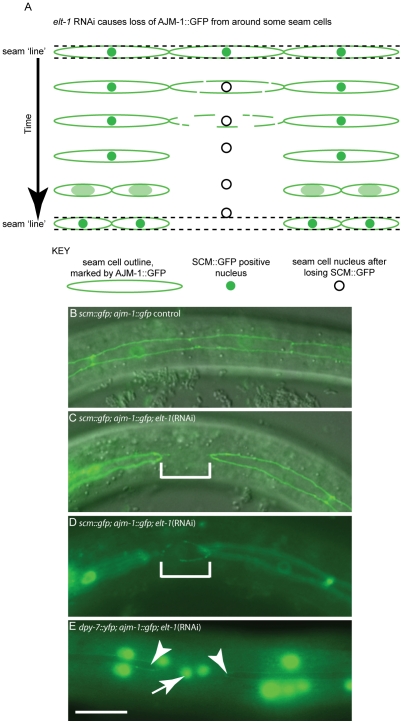Figure 5. elt-1 RNAi causes division-independent seam to hypodermis fate transitions.
In addition to division defects, loss of seam fate was also observed between cell divisions following elt-1 knockdown. (A) Schematic diagram of AJM-1 loss from one cell in the V lineage, involving the gradual loss of AJM-1::GFP from around the cell until the cell is completely unbounded. SCM::GFP expression is always absent in such cells. Over a period of several hours, the cell becomes smaller and rounder and moves out of the line of the seam, into the hyp7 syncytium. Subsequently, these cells fail to divide, in contrast to cells that remain in the seam lineage and thus retain their stem fate. (B) Wild type seam lineage in animals expressing both ajm-1::gfp and scm::gfp, showing cells in a continuous line. (C) and (D) show the same cell in two different planes in an elt-1(RNAi) animal in which seam cells lose their AJM-1::GFP boundary (representative cell shown in bracketed region), changing shape and plane as they move into the hyp7 syncytium (change of shape and plane obvious in D). In order to quantify inappropriate fusion in these worms we scored animals with one or more breaks in the seam line. In elt-1(RNAi) animals 68% of animals had breaks in the seam (n = 44). In control animals (exposed to HT115 bacteria containing the empty RNAi feeding vector L4440) 1.8% of animals had breaks (n = 56). (E) Using worms expressing both AJM-1::GFP and dpy-7p::yfp, it is possible to show that cells which lose their AJM-1 boundary and move out of the seam lineage as a result of elt-1 RNAi, subsequently switch on dpy-7 expression (indicated by white arrow), a marker of hypodermal fate. Adjacent seam cells which retain AJM-1::GFP expression show no dpy-7 expression (white arrow heads).

